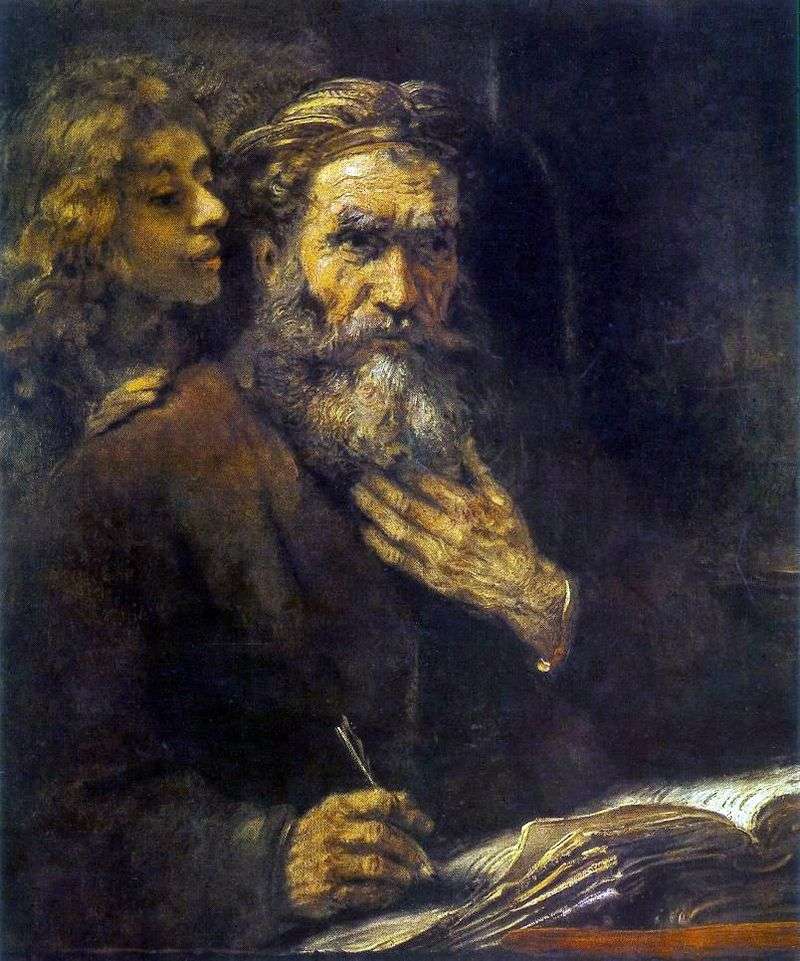
In February 1602, Caravaggio received an order for the painting “Saint Matthew and the Angel”, which was to take place between the two paintings written earlier in the altar of the Caparelli Chapel. His plot is connected with the appearance of Matthew the angel, who inspired him to write one of the Gospels. Following his ideas of realism, Caravaggio portrayed the angel directly with Matthew’s leading hand on the parchment – while the evangelist himself is like a person who does not know the letter. This version of the painting was rejected by the church, because the image was found indecent – above all, because of “insultingly exposed to public view of the nude legs of a saint.”

Caravaggio immediately created a more traditional option. This option was considered appropriate, and he still decorates the altar of the Capella Contrerelli. Denied the same canvas bought another patron of Caravaggio, the Marquis Vincenzo Giustiniani. During the Second World War, it died in Germany
 Martyrdom of St. Matthew by Michelangelo Merisi and Caravaggio
Martyrdom of St. Matthew by Michelangelo Merisi and Caravaggio Appeal of the Apostle Matthew by Michelangelo Merisi and Caravaggio
Appeal of the Apostle Matthew by Michelangelo Merisi and Caravaggio San Mateo y el ángel – Michelangelo Merisi da Caravaggio
San Mateo y el ángel – Michelangelo Merisi da Caravaggio Madonna of Loreto by Michelangelo Merisi da Caravaggio
Madonna of Loreto by Michelangelo Merisi da Caravaggio Rest on the way to Egypt by Michelangelo Merisi da Caravaggio
Rest on the way to Egypt by Michelangelo Merisi da Caravaggio Saint Matthew and the Angel by Rembrandt Harmens Van Rhine
Saint Matthew and the Angel by Rembrandt Harmens Van Rhine Madonna del Rosario by Michelangelo Merisi da Caravaggio
Madonna del Rosario by Michelangelo Merisi da Caravaggio The ecstasy of St. Francis by Michelangelo Merisi and Caravaggio
The ecstasy of St. Francis by Michelangelo Merisi and Caravaggio